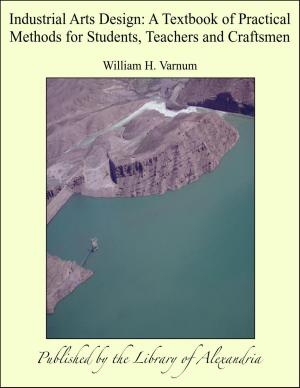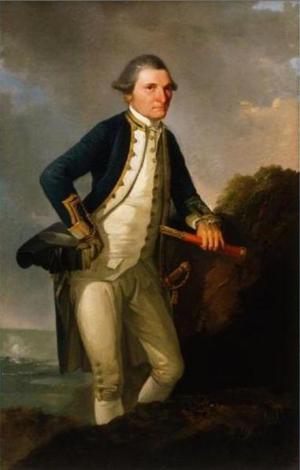Russia as Seen and Described by Famous Writers
Nonfiction, Religion & Spirituality, New Age, History, Fiction & Literature| Author: | Various Authors | ISBN: | 9781465545329 |
| Publisher: | Library of Alexandria | Publication: | March 8, 2015 |
| Imprint: | Language: | English |
| Author: | Various Authors |
| ISBN: | 9781465545329 |
| Publisher: | Library of Alexandria |
| Publication: | March 8, 2015 |
| Imprint: | |
| Language: | English |
The Russian Empire is a very extensive territory in eastern Europe and northern Asia, with an area exceeding 8,500,000 square miles, or one-sixth of the land surface of the globe (one twenty-third of its whole superficies). It is, however, but thinly peopled on the average, including only one-fourteenth of the inhabitants of the earth. It is almost entirely confined to the cold and temperate zones. In Nova Zembla (Novaya Zemlya) and the Taimir peninsula, it projects within the Arctic Circle as far as 77° 2' and 77° 40' N. latitude; while its southern extremities reach 38° 50' in Armenia, about 35° on the Afghan frontier, and 42° 30' on the coasts of the Pacific. To the West it advances as far as 20° 40' E. longitude in Lapland, 18° 32' in Poland, and 29° 42' on the Black Sea; and its eastern limit—East Cape in the Bering Strait—extends to 191° E. longitude. The Arctic Ocean—comprising the White, Barents, and Kara Seas—and the northern Pacific, that is the Seas of Bering, Okhotsk, and Japan, bound it on the north and east. The Baltic, with its two deep indentations, the Gulfs of Bothnia and Finland, limits it on the north-west; and two sinuous lines of frontier separate it respectively from Sweden and Norway on the north-west, and from Prussia, Austria and Roumania on the west. The southern frontier is still unsettled. In Asia beyond the Caspian, the southern boundary of the empire remains vague; the advance into the Turcoman Steppes and Afghan Turkestan, and on the Pamir plateau is still in progress. Bokhara and Khiva, though represented as vassal khanates, are in reality mere dependencies of Russia. An approximately settled frontier-line begins only farther east, where the Russian and Chinese empires meet on the borders of eastern Turkestan, Mongolia and Manchuria. Russia has no oceanic possessions, and has abandoned those she owned in the last century; her islands are mere appendages of the mainland to which they belong. Such are the Aland archipelago, Hochland, Tütters, Dagö and Osel in the Baltic Sea; Nova Zembla, with Kolgueff and Vaigatch, in the Barents Sea; the Solovetsky Islands in the White Sea; the New Siberian archipelago and the small group of the Medvyezhii Islands off the Siberian coast; the Commandor Islands off Kamchatka; the Shantar Islands and Saghalin in the Sea of Okhotsk. The Aleutian archipelago was sold to the United States in 1867, together with Alaska, and in 1874 the Kurile Islands were ceded to Japan.
The Russian Empire is a very extensive territory in eastern Europe and northern Asia, with an area exceeding 8,500,000 square miles, or one-sixth of the land surface of the globe (one twenty-third of its whole superficies). It is, however, but thinly peopled on the average, including only one-fourteenth of the inhabitants of the earth. It is almost entirely confined to the cold and temperate zones. In Nova Zembla (Novaya Zemlya) and the Taimir peninsula, it projects within the Arctic Circle as far as 77° 2' and 77° 40' N. latitude; while its southern extremities reach 38° 50' in Armenia, about 35° on the Afghan frontier, and 42° 30' on the coasts of the Pacific. To the West it advances as far as 20° 40' E. longitude in Lapland, 18° 32' in Poland, and 29° 42' on the Black Sea; and its eastern limit—East Cape in the Bering Strait—extends to 191° E. longitude. The Arctic Ocean—comprising the White, Barents, and Kara Seas—and the northern Pacific, that is the Seas of Bering, Okhotsk, and Japan, bound it on the north and east. The Baltic, with its two deep indentations, the Gulfs of Bothnia and Finland, limits it on the north-west; and two sinuous lines of frontier separate it respectively from Sweden and Norway on the north-west, and from Prussia, Austria and Roumania on the west. The southern frontier is still unsettled. In Asia beyond the Caspian, the southern boundary of the empire remains vague; the advance into the Turcoman Steppes and Afghan Turkestan, and on the Pamir plateau is still in progress. Bokhara and Khiva, though represented as vassal khanates, are in reality mere dependencies of Russia. An approximately settled frontier-line begins only farther east, where the Russian and Chinese empires meet on the borders of eastern Turkestan, Mongolia and Manchuria. Russia has no oceanic possessions, and has abandoned those she owned in the last century; her islands are mere appendages of the mainland to which they belong. Such are the Aland archipelago, Hochland, Tütters, Dagö and Osel in the Baltic Sea; Nova Zembla, with Kolgueff and Vaigatch, in the Barents Sea; the Solovetsky Islands in the White Sea; the New Siberian archipelago and the small group of the Medvyezhii Islands off the Siberian coast; the Commandor Islands off Kamchatka; the Shantar Islands and Saghalin in the Sea of Okhotsk. The Aleutian archipelago was sold to the United States in 1867, together with Alaska, and in 1874 the Kurile Islands were ceded to Japan.















